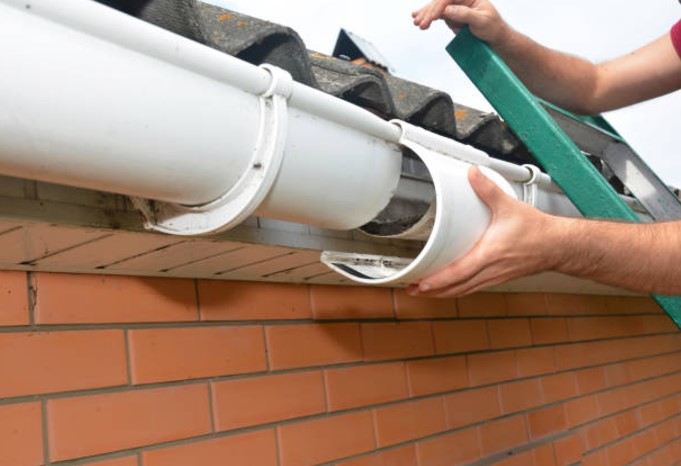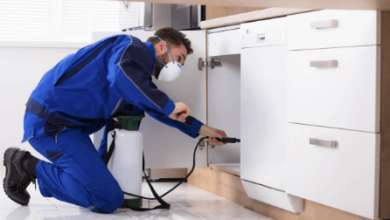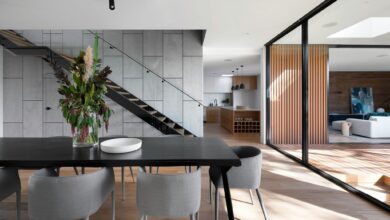How Do Different Roof Drip Edge Types Compare?

A roof drip edge is a crucial component of any roofing system. It is a metal strip installed along the edges of a roof to help channel water away from the roof deck, eaves, and fascia, preventing water damage, rot, and other issues. However, not all drip edges are the same. There are different types of roof drip edge types, each designed for specific roofing needs, aesthetic preferences, and local building codes. Understanding the differences between these types is essential when planning a roof installation or replacement.
In this article, we will compare the various roof drip edge types, highlighting their features, advantages, and drawbacks.
1. Standard Drip Edge (L-Shape)
The most common roof drip edge type is the L-shaped drip edge. This is a simple, cost-effective option widely used in both residential and commercial roofing. It is made of metal, typically aluminum, galvanized steel, or copper, and consists of two flat pieces: one that runs along the roofline (the horizontal part) and another that extends downward along the fascia (the vertical part). The vertical portion creates a small lip, which allows water to drip off the edge of the roof and prevent it from running down the side of the fascia.
Advantages:
– Affordable: L-shaped drip edges are one of the most budget-friendly options available.
– Easy to Install: These are straightforward to install and can be used with most roofing materials, including asphalt shingles, metal roofing, and tile.
– Prevents Water Damage: By guiding water away from the fascia, the L-shaped drip edge helps prevent rot and water infiltration, particularly at the eaves.
Drawbacks:
– Aesthetic Limitations: While functional, the L-shape can sometimes detract from the roof’s overall appearance, especially in high-end or custom homes.
– Limited Protection: While the L-shape effectively diverts water from the fascia, it doesn’t provide as much protection to the roof deck or underlayment, which could be a concern in areas with heavy rainfall or snow.
2. Fascia Drip Edge
The fascia drip edge is similar to the L-shaped drip edge, but it is specifically designed to integrate with the fascia board. In this configuration, the drip edge extends over the fascia and runs down to form a more prominent lip. The fascia drip edge provides more coverage and protection for the fascia, ensuring that water runs directly off the roof without risking damage to the underlying wood or structure.
Advantages:
– Better Fascia Protection: Since the drip edge covers the fascia board more completely, it is ideal for preventing water from seeping into the fascia, which can lead to rot or decay over time.
– Improved Aesthetics: Fascia drip edges offer a more refined and seamless look than the basic L-shaped drip edge, making them a good choice for homes where appearance matters.
Drawbacks:
– Costlier: Fascia drip edges tend to be more expensive than the L-shape, due to their extra coverage and the additional material required.
– Installation Complexity: Installation can be more complicated than L-shaped drip edges, requiring careful attention to the fascia’s alignment to ensure proper water diversion.
3. F-style Drip Edge
An F-style drip edge is another popular type, primarily used with roofing systems where shingles need to be bent or cupped at the edge. The “F” shape is created by combining the horizontal lip (which covers the roof decking) with a vertical portion that extends downward, but with a lip that runs slightly outward. This design helps direct water away from the edge of the roof while also creating a “drip” that keeps water from running down the fascia.
Advantages:
– Versatility: The F-style drip edge is highly versatile and can be used with a wide variety of roofing materials, including shingles, tile, and metal roofs.
– Enhanced Water Protection: The extended lip on the vertical portion creates a more effective barrier, keeping water from splashing or leaking onto the fascia or the sides of the house.
– Durability: F-style drip edges are typically more durable and resilient than standard L-shaped types, especially in areas with heavy rainfall or snow.
Drawbacks:
– More Expensive: The F-style drip edge tends to be pricier than standard models due to the additional materials and complexity in design.
– Installation Time: Installation may take longer, especially when aligning it with shingles or tiles that require a tight fit.
Read also: Growing Up: The Evolution of Roof Plant Platforms in Modern Architecture
4. Coping Drip Edge
A coping drip edge is specifically designed for flat roofs, particularly those with a parapet wall or where the roof extends up to a vertical wall. Unlike the other roof drip edge types, which are installed on sloped roofs, coping drip edges are meant to protect the edges of flat or low-slope roofs from wind-driven rain and debris.
The coping drip edge extends over the edge of the roof, forming a protective lip that extends downward and outward to prevent water from reaching the underlying structure. This type of drip edge is often used for commercial buildings, including warehouses and industrial properties, but it can also be used in residential applications, especially for modern or contemporary homes with flat roofs.
Advantages:
– Ideal for Flat Roofs: Coping drip edges are designed for roofs that don’t have a traditional slope, making them ideal for flat or low-slope roofs.
– Waterproofing: This type of drip edge effectively prevents water from penetrating the building’s walls or structure, safeguarding it from water damage.
Drawbacks:
– Installation Challenges: Installing a coping drip edge requires precise measurements and adjustments, which may require the help of an experienced contractor.
– Cost: Coping drip edges are generally more expensive due to their specialized design.
5. Choosing the Right Roof Drip Edge Type
When selecting from the different roof drip edge types, there are several factors to consider:
– Roof Slope and Structure: The slope of your roof plays a significant role in determining the most effective type of drip edge. Steeper slopes may benefit from L-shaped or F-style drip edges, while flat roofs require coping drip edges.
– Weather Conditions: In areas with heavy rainfall or snow, opting for a more robust drip edge, like the F-style, may be more beneficial to ensure maximum water protection.
– Aesthetics: The look of your roof and fascia should also be considered. Fascia drip edges or F-style drip edges may be more aesthetically pleasing for higher-end homes.
Conclusion
Understanding the different roof drip edge types and how they compare is crucial when choosing the right solution for your roof. Whether you opt for the simple, cost-effective L-shaped drip edge, the protective fascia drip edge, or the versatile F-style drip edge, each option offers distinct benefits tailored to specific roofing needs. For flat roofs, a coping drip edge may be your best option. Ultimately, your choice should be based on factors like roof slope, weather conditions, aesthetic preferences, and budget, ensuring that your roof remains well-protected for years to come.




